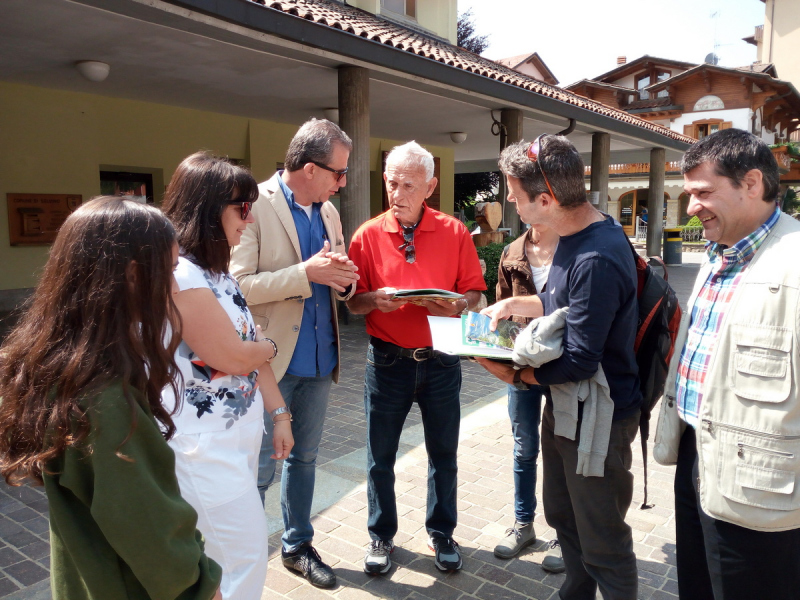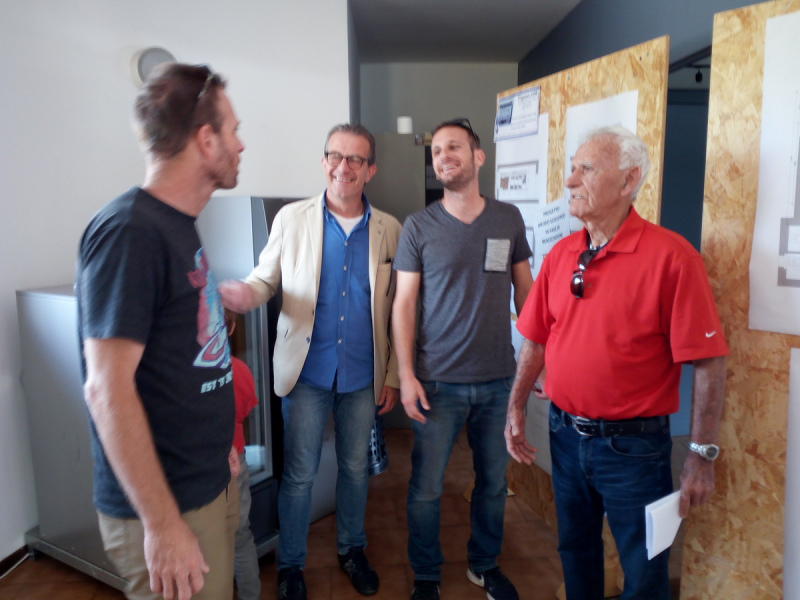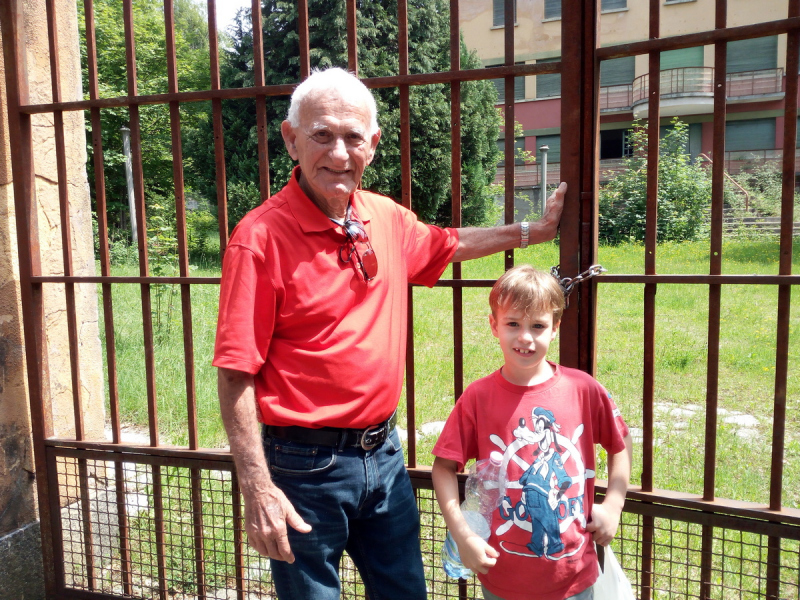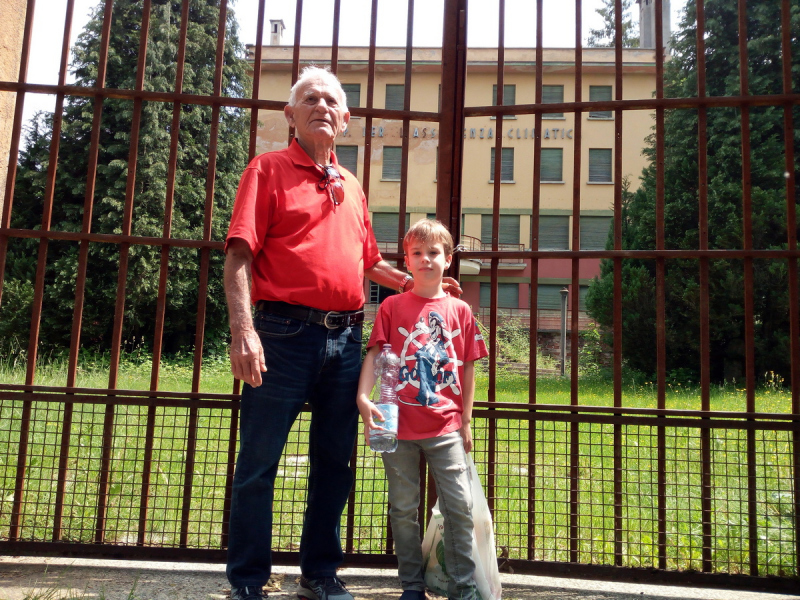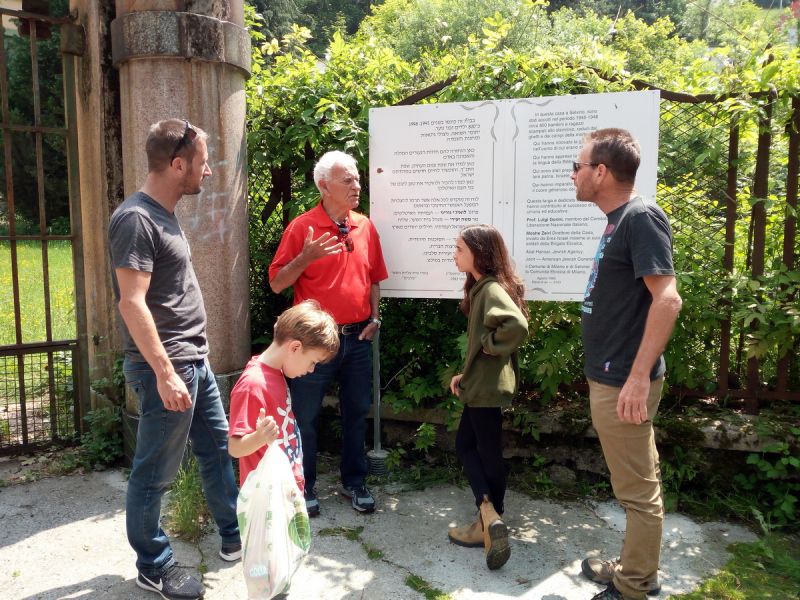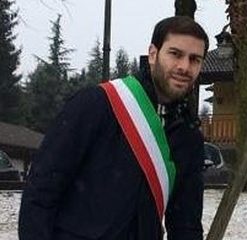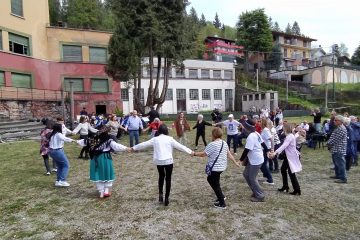He was only 10 years old when, in the autumn of 1946, Hersch Pelz arrived in Selvin from Poland with his brothers Dov, Yizhak, Josef and his sister Rifka. They were helped by the Joint (American Jewish Joint Distribution Committee) and Jewish Brigade.
His mother Sara, who as a maiden woman bore Hamer’s surname, was received in a large refugee camp near Milan.
The little Zvi, together with his four brothers, stayed for about two years in the house of Sciesopoli that he called the “Castle of Mussolini”. The sufficient food, the heated swimming pool, the comfortable beds, the challenging study and above all the football game and the skis, had given him a new warmth and a new life, under the careful guidance of the director Moshe Zeiri, a true father for all the children of the house of Sciesopoli in Selvino.
Moshe Zeiri gave all children of Selvin a Jewish name, because Hebrew had to be the common language to communicate between all children, the language of the Bible. Hersch Pelz also changed his name to Zvi, which is the Hebrew translation of the Yiddish Hersch name, meaning “Deer”.
Zvi left Selvino in November 1948 with the last group of children along with Moshe Zeiri. He took the train from Milan to Naples and then reached Israel with the Greek ship Theti. It was a legal journey because on 16 May 1948 the State of Israel had been recognized by the UN.
For 10 years Zvi lived as kibbuzim in the kibbutz “Kvutzat Schiller”, where Moshe Zeiri stood.
He served in the army and then, as a tour guide, travelled around the world. She had a loving wife who gave him four children, but unfortunately she died still young.
On June 2, 2018, Zvi returned to Selvino for a special visit with his sons Sharon, Maoz and Roy, their nephew Peleg and their young boy Yiftach.
On a beautiful sunny day, the Municipality of Selvino welcomed the guests. He was represented by the young councillor Alessandra Brissoni and by the councillors Mario Vitali, accompanied by his wife.
The group visited the museum of Sciesopoli, the Children’s House of Selvino, which is being created in the Municipality of Selvino. Then he went to the gates of the large building in Sciesopoli. The heart has been shuddered. The memories came to light and became exciting stories that Zvi Dotan shared with his children, grandchildren and all of us.
The tragedy of the Holocaust and the Second World War was for him and his family a painful odyssey experienced by a child who was not to blame, except the simple fact of being a Jew in the terrible Poland of those years of persecution, ghettos, raids, progrom, deportation, war, hunger and fear.
Only in Selvino he found relief in the mountains of the plateau, in the large house of Sciesopoli where the study, sports and rules of the Republic of Children of Selvino gave him happy days, a new life and hope in a future of peace and serenity, which he built in Israel with his wonderful family.
Today Zvi wants to transmit to his children and grandchildren, and to all of us, the memory of the terrible days of the war and of the Shoah, but also that of the serene days of study and play spent in the House of the Children of Selvin.
“The stone of the photographer”: this was the name of the two pedestals on which the children of Selvino lay for the photos that would have immortalized them, right there, during the years of the fascist dictatorship, on the pedestals were the bronze busts of the fascist squadrists who died in the terrorist assault of August 4, 1922 on the socialist newspaper of the Avanti!
What an incredible revenge for those who had been the subject of racial laws, contempt, persecution, extermination and physical elimination by fascism and Nazism!






